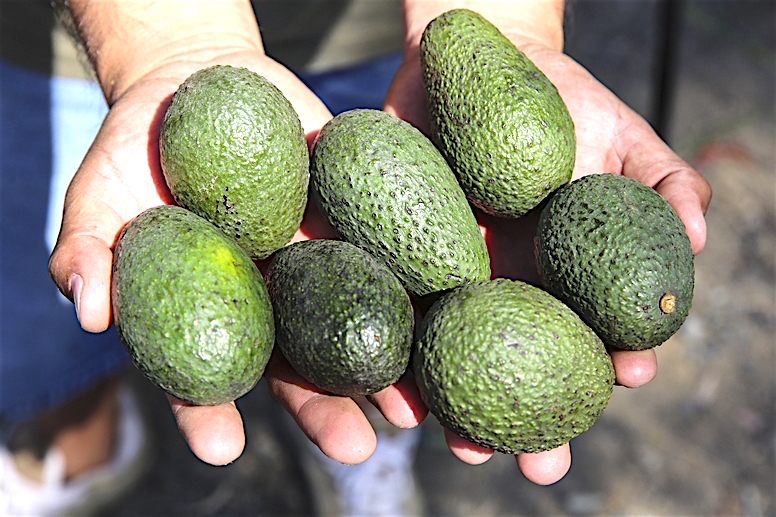It’s all about supply and demand in the wonderful world of avocados. Despite a large amount of foreign imports, demand has exceeded supply this year. That means higher prices at the grocery check-out for North County consumers raising the price of guacamole, and such, to record levels this season.
As more people are drawn to avocados for their flavor and health benefits, consumption of the popular superfruit has spiked in the U.S.: Americans consumed 6.5 pounds per-capita in 2015, up from 3.5 pounds in 2006.
In the U.S., California is the leading producer of avocados and a heat wave last summer hurt production – further adding to the price hikes. In some cases, supermarket prices for avocado prices doubled in less than six months last year. A single avocado cost around $2 in some parts of the country, up from less than $1 not long beforehand.
But times should be a-changing come early fall, suppliers say.
Production from California and Peru will be winding down to a trickle by the end of August and Mexico is not expected to start shipping a weekly volume near the 40 million pound mark, which is at least approaching the demand level, until late September or early October. That’s the word from grower-shippers, many of whom are concentrated around Escondido, Valley Canter and Fallbrook.
Speaking to The Produce News on July 25, Gary Caloroso, director of marketing for Giumarra Agricom, the firm’s avocado division headquartered at Escondido, said the market remained remarkably strong and he agreed there would be no let up until late September/early October.
Running down the company’s price list, Caloroso said most avocados were in the $40-$50 range per case — cases contain about 40 to 48 avocados — depending upon size and point of origin. He said California fruit in 48 size was commanding $50 “and the market on 48s is getting stronger,” adding that even small fruit was in the high $30s or low $40s.
And organic avocados were through the roof. Caloroso noted that if you could find a box of 48 size organic avocados it would cost you about $65 on that late July day.
Bob Lucy, president of Del Rey Avocado Co. Inc. at Fallbrook, said the lack of fruit at the most popular 48 size was increasing demand for other sizes and propping up those prices as well. There can often be a wide price disparity among sizes as growing conditions can cause a surplus in one size and a drought in another. This season that price disparity has typically been more narrow because of total decrease in volume, demand is high for basically any avocado available.
Rob Wedin, director of fresh sales and marketing for Calavo Inc. at Santa Paula, told The Produce News in late July that California will have shipped about 90 percent of its crop by the end of that month. The remaining 20 million pounds or so still on the trees will ship through August and September, averaging only a few million pounds at best each week. Other shippers indicated that Peru’s final shipments to the United States were already in route with mid-August containing the final arrival dates.
In the meantime, Mexico’s volume has not ramped up as quickly as expected and it appears that the flora loca summer crop is lagging behind expectations.
Wedin said Calavo has had very good movement for its small fruit, typically sold in bags. Trader Joe’s is doing great with its Teeny Tiny Avocados and other retailers are finding similar success. Typically packed four to six pieces of fruit in a bag, it gives the retailer a good ring and a better price point, per avocado, than the larger sizes that are sold individually.
Basically, feed the entire avocado supply forecast into the computer and what comes out is that promotional pricing is going to be at a store near you — but not until October.

May 19, 2016. I North County, CA. USA. | Avocados on sale from a venders off HWY-76 in San Diegos North County. |Photos by Jamie Scott Lytle. Copyright.
San Diego County, mainly in the arc cutting through Escondido-Valley Center-Fallbrook, grows one-third of all avocados grown in California. Many of the nation’s leading grower-shippers are centered in the area. Temecula and Riverside County also has a significant growing operation. The state produces 95 percent of al all avocados grown in the U.S..
Over the last 10 years, avocado acreage in San Diego County has dwindled from around 30,000 acres to 18,000 acres. and expected to drop to 15,000 acres in the next two years. Total avocado crop value was nearly $198 million in 2013.






Be the first to comment on "Hold on to your guac, avo prices fall in fall"